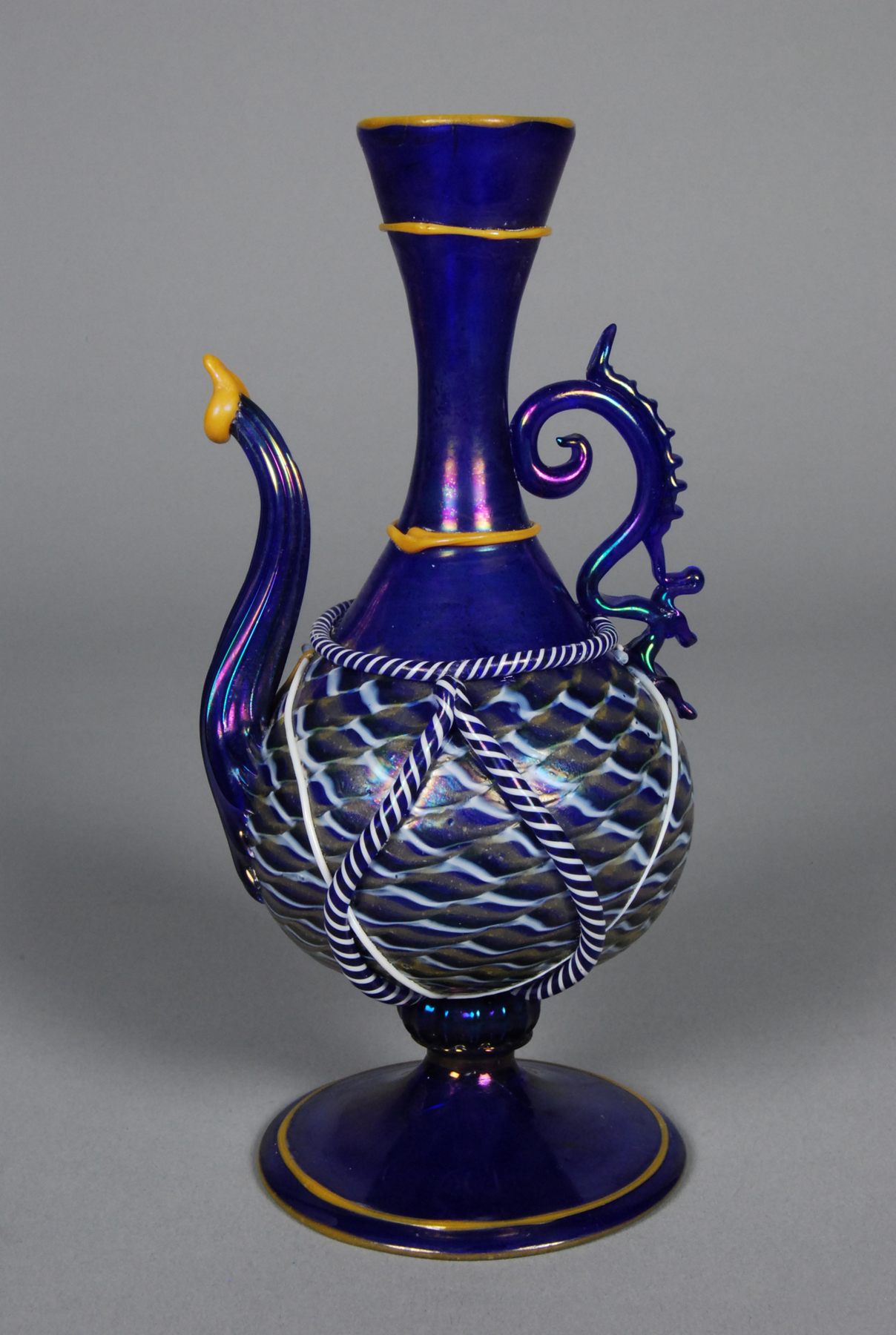Ewer
Salviati & Company produced faithful copies of ancient vessels, but the firm was also known for original fanciful designs. New creations, such as this ewer, combined the styles and techniques of ancient Egypt with forms associated with Renaissance Venice. In ancient Egypt, vessels were formed by heating powdered glass in a furnace around a clay core. Once the glass had melted around the core, glassmakers trailed threads of molten glass around the vessel and combed the trails with a pointed tool to create patterns. The ewer combines the ancient trailing and combing techniques with the later technique of glass blowing to produce an entirely new effect.
Provenance
Provenance (from the French provenir, 'to come from/forth') is the chronology of the ownership, custody, or location of a historical object. Learn more about provenance at the Walters.
Henry Walters, Baltimore, 1911 [mode of acquisition unknown]; Walters Art Museum, 1931, by bequest.
Exhibitions
| 2007-2008 | Salviati and the Antique: Ancient Inspiration for Modern Glassmaking. The Walters Art Museum, Baltimore. |
Geographies
Italy, Venice (Place of Origin)
Measurements
H: 5 1/2 in. (13.97 cm) approx.
Credit Line
Acquired by Henry Walters, 1911
Location in Museum
Not on view
Accession Number
In libraries, galleries, museums, and archives, an accession number is a unique identifier assigned to each object in the collection.
In libraries, galleries, museums, and archives, an accession number is a unique identifier assigned to each object in the collection.
47.347


